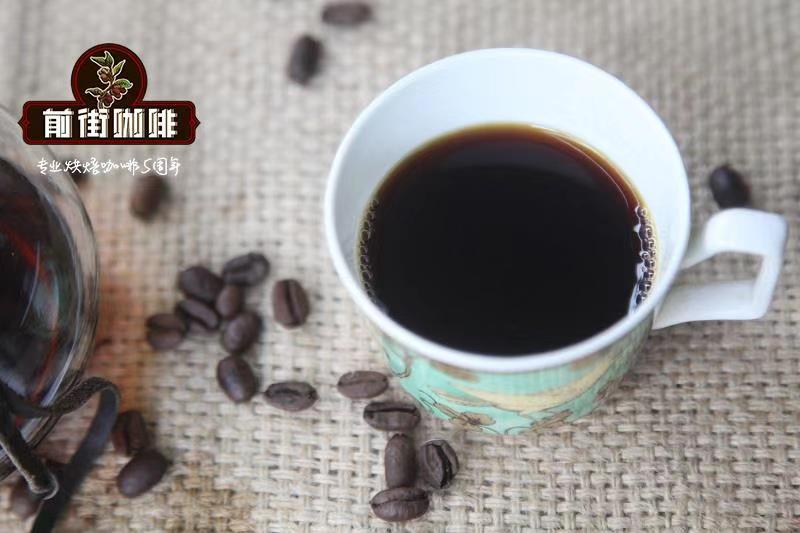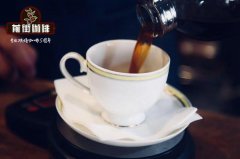What's so special about washing Yega Xuefei? there are several ways to brew Yega Xuefei.

Professional coffee knowledge exchange more coffee bean information please follow the coffee workshop (Wechat official account cafe_style)
Introduction to the brewing method of washing Yega coffee in front of the street
The earliest coffee originated in Ethiopia, Africa. In the ancient African land, nature gave birth to a magical fruit that affects the world and even the present. When people in many parts of the world still don't know what coffee is, the Agol people in Ethiopia are already growing and creating drinking coffee. Ethiopia is still the origin of many high-grade coffee beans, including Yega Xuefei.
Washing treatment method
The peel, pulp and mucous membrane are removed by washing and fermentation. first, the coffee beans are washed to clean. after washing, the water content of the coffee beans reaches 50% and must be dried so that the moisture content is reduced to 12%, otherwise the coffee beans are exposed to the air. contact with the air to continue to grow mellow, will become moldy and rotten, the most timely treatment method is to use sunlight drying, you can get a particularly good flavor, fragrant Yega.
The washing method will have a good mellow taste, a high concentration of floral fragrance and a lively and soft sour taste. Yega has a distinctive style, and the flavor of citrus and floral flavor in the coffee is irresistible to coffee fans.
[cake filter cup]
The bottom of the cake filter cup is flat, and this flat-bottomed design allows coffee to be extracted more fully. And there are only three small holes at the bottom, so its flow rate is relatively slow, so that the coffee powder can be soaked and the extracted coffee will be more balanced.
Parameters & techniques: powder weight 15g; medium and fine grinding (BG 5R: Chinese standard No. 20 sieve pass rate 58%); water temperature 90 ℃, powder / water ratio 1: 15; steaming with 31 grams of water for 30 seconds, water injection to 122g in the center of small flow, water injection to 227g when the water level is about to expose the powder bed, and remove the filter cup when the water level is about to expose the powder bed. (steaming starts) the extraction time is two minutes.
Flavor: it smells of lemon and nuts, the entrance is citric acid, sugar is sweet, with a hint of flowers, the aftertaste of oolong tea.
[KONO]
The ribs of the KONO filter cup are relatively short, and the fit degree of the filter paper filter cup is relatively high, so that when brewing, the exhaust space of the filter cup is limited, the air flow is naturally limited, and the flow rate slows down, so that a large part of the time of coffee powder is soaked, which increases the water absorption time of coffee powder particles, thus making the whole extracted coffee more balanced and less prone to insufficient extraction.
Parameters & techniques: powder weight 15g; medium and fine grinding (BG 6m: 50% pass rate of Chinese standard No. 20 sieve); water temperature 90 ℃, powder / water ratio 1: 15; steam with 31 grams for 30 seconds, small flow center water injection to 124g, water level drop to 228g when the powder bed is about to be exposed, and the filter cup is removed when the water level is about to expose the powder bed. (steaming starts) the extraction time is 2: 10 ".
Flavor: the entrance has cream, lemon flavor, black tea aftertaste. The aroma is more introverted and sweet.
[French kettle]
The French kettle can be said to be a kind of convenient appliance! It is quite simple to use a pressure pot to make coffee, that is, to soak the coffee completely in the pot, and then use a pressure bar with a metal filter to separate the coffee from the coffee grounds. The coffee obtained by this brewing method has a very good mellow feeling, which can increase the texture and oil. It is a relatively convenient and easy-to-use appliance.
Parameters & techniques: powder weight 20g; medium and fine grinding (BG 6m: Chinese standard No. 20 sieve pass rate 50%); water temperature 90 ℃, powder / water ratio 1: 15; direct water injection to 300g, stirring 5 times at 1: 30 ", let powder water fully contact, soak until 2 minutes to press out and filter out, the extraction time for all coffee is 2: 30".
Flavor: with floral aroma, citric acid notes in the mouth, sweet cream and sugar, black tea aftertaste, thick and smooth taste.
END
Important Notice :
前街咖啡 FrontStreet Coffee has moved to new addredd:
FrontStreet Coffee Address: 315,Donghua East Road,GuangZhou
Tel:020 38364473
- Prev

Sidamo Coffee Sakuran hand flushing skills what temperature is suitable for flushing?
Professional coffee knowledge exchange more coffee bean information please follow the coffee workshop (Wechat official account cafe_style) front street Sidamo Sidamo coffee hand brewing skills Sidamo producing area (Sidama) is located in the south of Ethiopia, coffee growing area is located around the East African Rift Valley (Great Rift Valley), Sidamo coffee flavor is very diverse, because of different soil composition
- Next

How to make mantenin to highlight the flavor of mantenin coffee beans hand brewing parameters method brief introduction
Every boutique coffee shop has a Mentenin on its menu, and Front Street Coffee is no exception. There are several Mentenins, such as Front Street Bean Mentenin, Gold Mentenin, Tiger Mentenin, and Old Mentenin and Sun-baked Mentenin sold on Front Street. Indonesia's coffee mainstay is Robusta, high
Related
- Beginners will see the "Coffee pull flower" guide!
- What is the difference between ice blog purified milk and ordinary milk coffee?
- Why is the Philippines the largest producer of crops in Liberia?
- For coffee extraction, should the fine powder be retained?
- How does extracted espresso fill pressed powder? How much strength does it take to press the powder?
- How to make jasmine cold extract coffee? Is the jasmine + latte good?
- Will this little toy really make the coffee taste better? How does Lily Drip affect coffee extraction?
- Will the action of slapping the filter cup also affect coffee extraction?
- What's the difference between powder-to-water ratio and powder-to-liquid ratio?
- What is the Ethiopian local species? What does it have to do with Heirloom native species?

